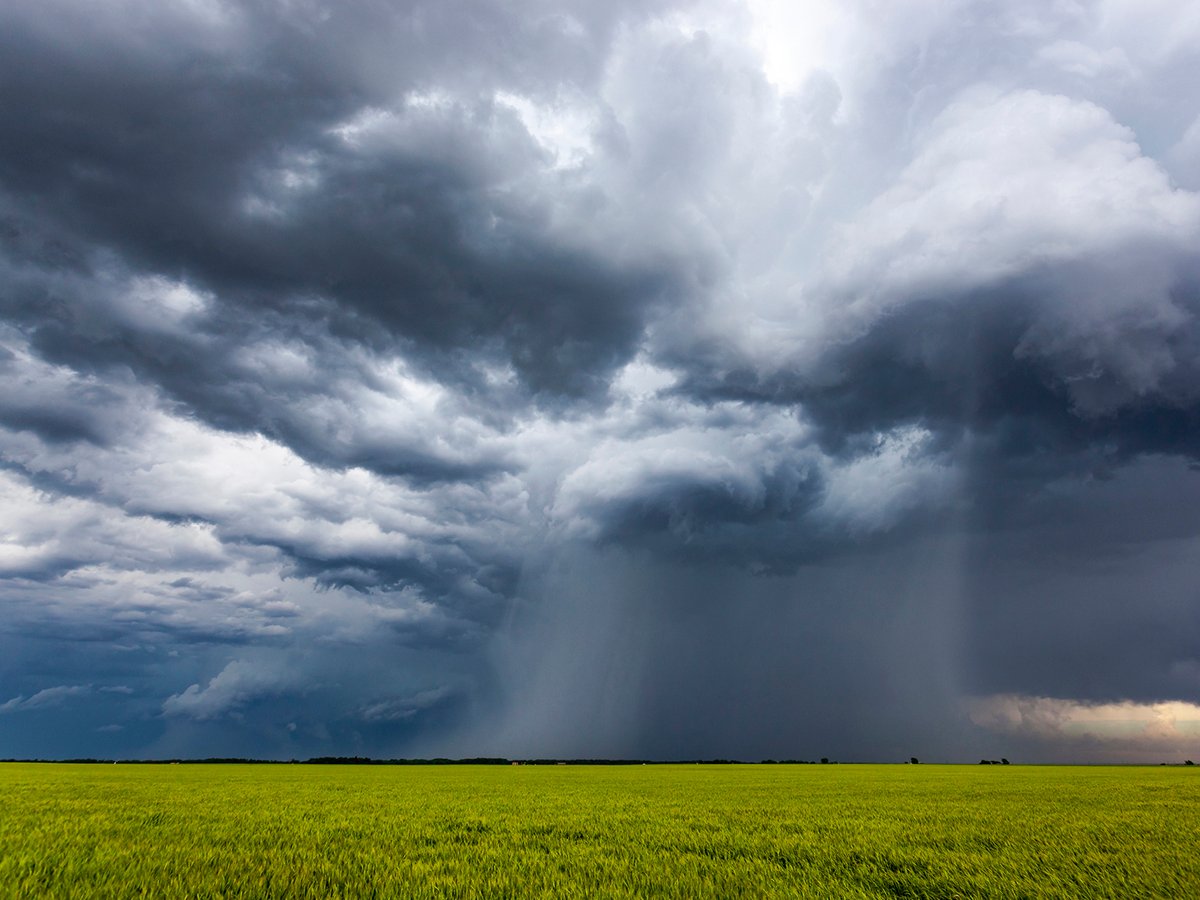BENDIGO, Australia – It’s a frosty Friday in Australia when a show judge has to count the rings on the bulls’ scrotums to assess testicles in a cold barn.
None of the exhibitors at the Bendigo National Beef Show complained because the cold weather also brought much needed rain throughout the southern part of the country.
Held May 19-21, show organizers worried the turnout would be poor because of drought plaguing the country. However, producers brought more than 450 cattle representing 14 breeds to the former gold rush town to socialize and make deals at the stalls.
Read Also

Extreme rain increases as planet warms
In this issue, we are going to wrap up our look at extreme rainfall by examining the different weather patterns that tend to be associated with these rainfall events.
The breeding stock was in good shape but owners admitted they were spending a lot of money to keep cattle alive and preserve genetics.
Amanda Basse of Mangalore, Victoria, cut back on the number of cattle shows she will attend this year, including the prestigious Royal Sydney Easter show where her family has won numerous past championships with its Brahman cattle.
“We had to choose between buying hay and going to the show.”
She opted for feed. Her cattle had been grazing swamp grass but when the swamps dried up, Basse had to find alternatives.
“Nothing can survive on dirt,” she said.
“We had to feed every day and we had to bring in a heap of hay. They’re all grain fed to keep their weight up.”
Margaret Hunter and Sandra Johnson, owners of the Elizabeth Fields Murray Grey stud farm at Yass near Canberra, are new to the livestock world and have worked hard to build an elite herd. Despite careful pasture management and purchased feed, they had to sell off their heifer crop this year because of drought.
“Everybody has been buying their own feed,” said Hunter, who is a crown prosecutor in Canberra. Johnson is a retired cardiologist.
They chose the Murray Grey breed because it is Australian and they believe the moderate sized animals are easy to handle for women with little cattle experience.
The pair attends about seven shows per year and in two years have won numerous championships against more experienced breeders.
At the other end of the show barn, Square Meaters, a unique Australian breed selected from the Murray Grey, captured attention with their quiet manner and unique name. About 170 breeders are developing the breed as a niche beef product for local butchers and restaurants looking for smaller steaks that can still be cut thick.
“People used to judge a good steak by how far over the plate it fell,” said Peter Brown of Kyneton, Victoria, president of the Square Meaters Association, whose members have exported breeding stock to the United States.
There is tremendous variability among Australian beef cattle. Some producers eye the export market with larger cattle while others prefer to service the domestic consumer seeking smaller cuts.
Square Meaters cattle produce a 220 kilogram carcass with less marbling because they finish on grass. They have a large, square hindquarter but are shorter than the typical Murray Grey or other British cattle.
“They’re designed to finish on grass,” Brown said.
“If they went to the feedlot, they would just blow up.”
Square Meaters producers use the genetic assessment system called Gene Star to evaluate their cattle. The highest score is eight using a DNA test. Brown’s cattle have scored six out of eight for feed efficiency and tenderness but only two for marbling.
A tour of the show barns in Bendigo found everything from shaggy Highlands to big, beefy Charolais. Each offered something different.
“Every beast in this place has a place,” Brown said.
John Hutt of Cowra in New South Wales agreed all breeds are useful but as a long-time showman and purebred breeder of Red Angus and Polled Herefords, he worries about producers following trends rather than working to make better beef cattle.
He said too many producers in the last 15 years changed the style of their purebreds to taller, more narrow structured types that did not hold up in Australian conditions. After five hard years of drought, more people are returning to a type more suitable to the country.
“In Australia the top 10 percent of animals in any herd are financially viable. The bottom 20 percent should have their heads cut off,” he said.
“It’s the same with every breed. The good ones are an asset. The poor ones are a liability.”
The red Angus cattle that he added to his herd are gaining in popularity, especially in Queensland where the bulls can be mated with Brahman cows and do well in hot, dry conditions.















